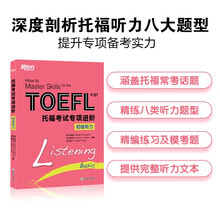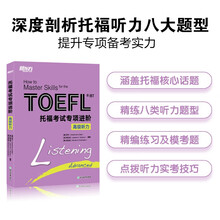Educational Testing Service (ETS) of Princeton, New Jersey, prepares andadministers the TOEFL test. This organization produces many other standardizedtests, such as the Test of English for International Communication (TOEIC), theGraduate Management Admissions Test (GMAT), and the Graduate Record Exam(GRE).
Although there are other standardized tests of English, the TOEFL test is by farthe most important in North America; ETS has offered this exam since 1965. Eachyear, almost a million people take the TOEFL test at testing centers all over theworld. About 5,000 colleges, universities, and other institutions in the United Statesand Canada either require students from non-English-speaking countries to supplyTOEFL test scores as part of their application process or accept TOEFL test scoresas evidence of a persons proficiency in English.Q: And what is the TOEFL iBT?A: For more than thirty years, the TOEFL test was given as a paper-and-pencil,multiple-choice test. In 1998, a computer-based version of the test became avail-able in many parts of the world. The newest generation of the test, the TOEFL iBT(Internet-based test), was introduced during the 2005——2006 academic year.
As the name implies, the test is delivered over the Internet. Test-takers workon the tests at individual computer stations at official testing centers. The test isoffered only on scheduled testing dates.
The TOEFL iBT is significantly different from the computer-based version ofthe test.Q: Different? How is the TOEFL iBT different?A: For one thing, the basic way in which the TOEFL iBT tests English is different.The new test emphasizes a test-takers ability to communicate in an academicsetting. For that reason, a Speaking Section has been added and the Writing Sectionhas been expanded.
Specifically, the TOEFL iBT differs from the previous version in thefollowing ways:
There is a new Speaking Section that tests your ability to communicate orally.
You record responses that are scored by raters at ETS.
You are allowed to take notes during all parts of the test.
There are "integrated" tasks that require you to combine your speaking and writing skills with your reading and listening skills.
Grammar skills are tested indirectly, especially in the Speaking and Writing Sections. There is no separate grammar section.
There are some new types of questions in Reading and Listening.
The lectures and conversations that you hear on the audio portions of the test are "authentic English." In other words, the language that you hear is more natural, more like the language used in the "real world." It contains the pauses, repetitions, self-corrections, and "umms" and "uhs" that you would expect to hear in a real lecture or conversation.
展开










